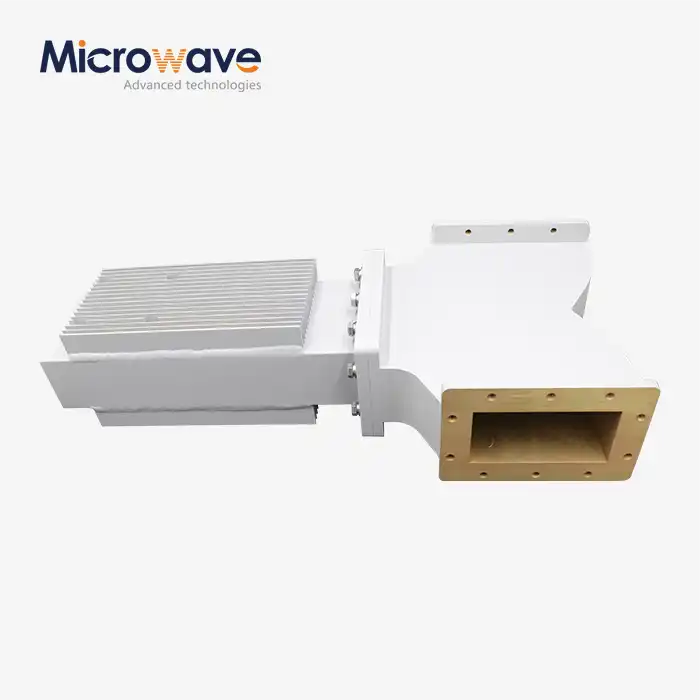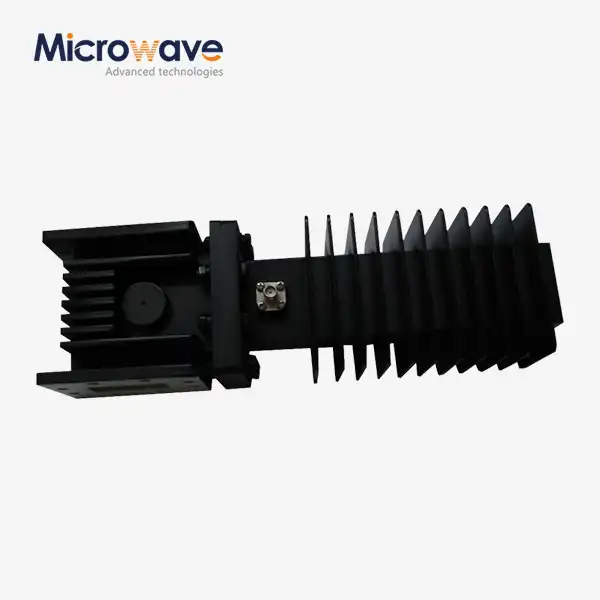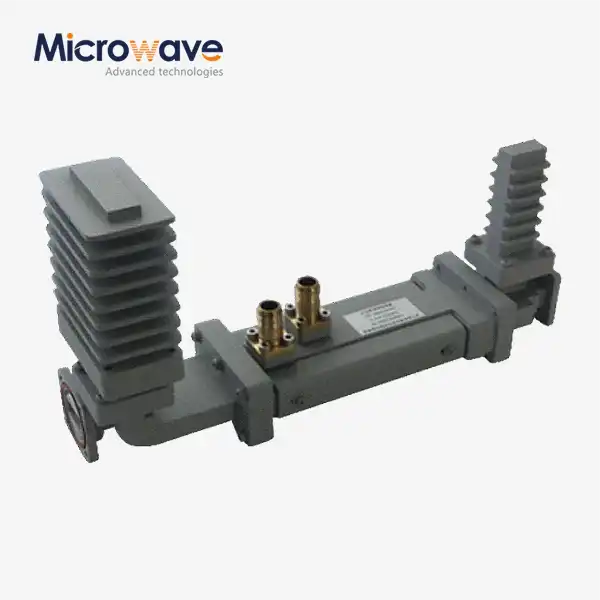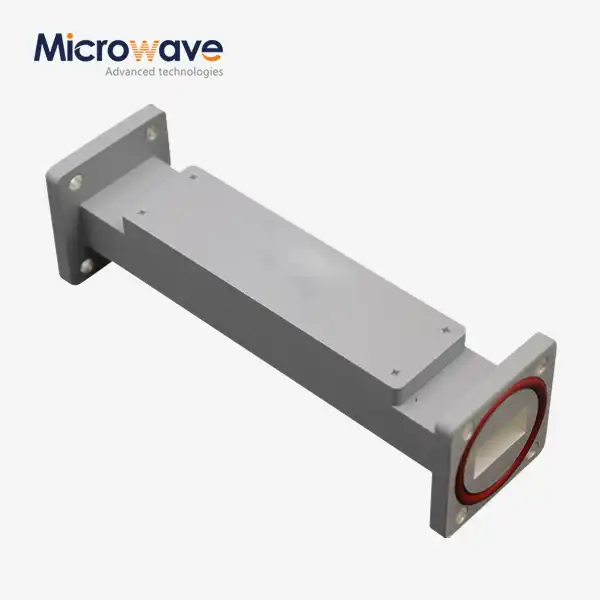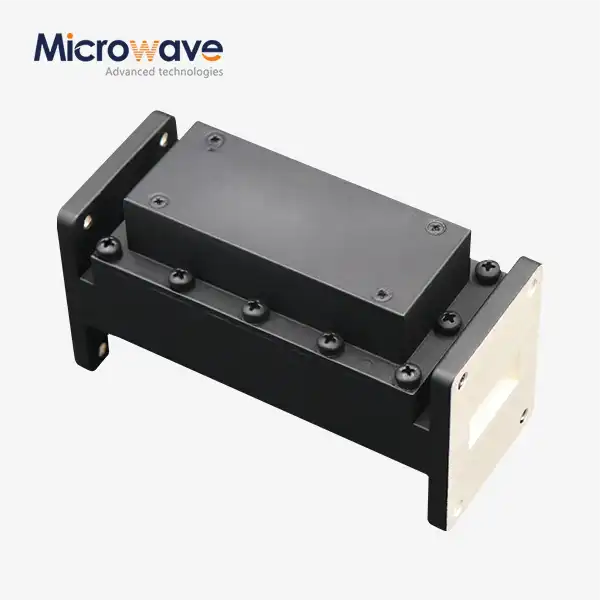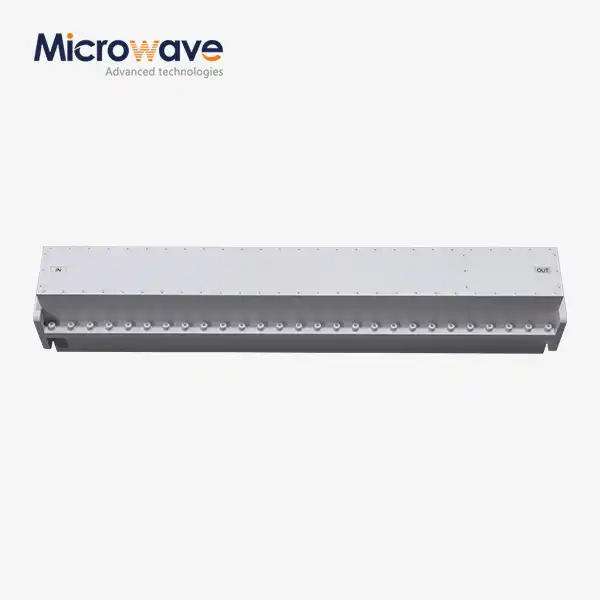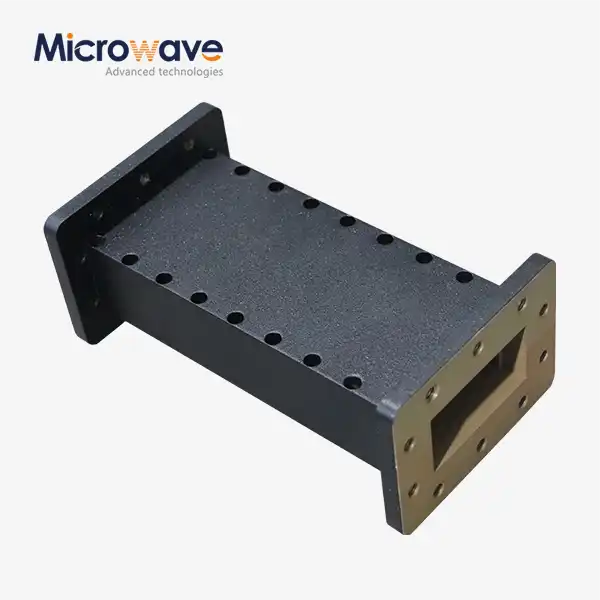How does power handling capacity affect the design and application of waveguide isolators?
Power handling capacity is a critical parameter that significantly influences both the design principles and practical applications of waveguide isolators in microwave systems. As transmission requirements grow increasingly demanding across various industries, understanding the relationship between power handling capabilities and isolator performance becomes essential. High Power Waveguide Isolators are specialized components engineered to manage substantial power levels while maintaining signal integrity in microwave transmission systems. These critical devices protect sensitive equipment by preventing reflected power from returning to the source, effectively creating a one-way path for electromagnetic waves. The power handling capacity directly impacts material selection, thermal management strategies, and ultimately determines the operational limits and reliability of the isolator in real-world applications.
Power Handling Fundamentals in Waveguide Isolator Design
The fundamental relationship between power handling and isolator design encompasses several critical aspects that determine overall performance. Engineers must balance electrical requirements with mechanical considerations to develop robust isolators capable of managing high power levels without compromising functionality.
Material Selection and Power Limitations
The materials used in High Power Waveguide Isolator construction directly influence power handling capabilities and system reliability. For optimal performance in high-power applications, Advanced Microwave Technologies utilizes premium-grade aluminum and copper in our isolator designs. These materials offer exceptional thermal conductivity, facilitating efficient heat dissipation during operation. The ferrite material selection is particularly crucial as it must maintain its magnetic properties at elevated temperatures without saturation. Our engineering team conducts extensive material testing to ensure consistent performance across varying power levels. For applications demanding power handling capabilities up to 1000W, we implement specialized composite materials with enhanced thermal stability. This careful material selection process ensures our isolators maintain low insertion loss (typically 0.3dB) while delivering the durability required for mission-critical applications in satellite communications, defense systems, and aerospace environments. The material composition also impacts the isolator's ability to maintain stable operation across the specified -40°C to +70°C temperature range, making material selection a fundamental consideration in power handling design.
Thermal Management Systems Integration
Effective thermal management represents one of the most significant challenges in designing High Power Waveguide Isolators. As power levels increase, heat generation becomes exponentially problematic, potentially degrading performance and shortening component lifespan. Advanced Microwave Technologies implements sophisticated thermal dissipation techniques including optimized heat sink designs, strategic component placement, and specialized cooling channels within the waveguide structure. Our thermal management systems are designed to maintain optimal operating temperatures even under maximum forward power conditions of 1000W. For particularly demanding applications, we incorporate active cooling solutions that work in conjunction with the natural thermal conductivity of the aluminum and copper components. This comprehensive approach to thermal management ensures signal integrity is preserved while maintaining isolation performance of typically 20dB across the specified 800MHz bandwidth. By addressing thermal considerations during the design phase, we minimize the risk of thermal runaway and ensure reliable operation in high-power environments where component failure is not an option. This attention to thermal management directly enhances the overall cost-effectiveness of the system by reducing downtime and repair requirements.
Dimensional Optimization for Power Efficiency
The physical dimensions and internal geometry of a High Power Waveguide Isolator significantly impact its power handling capacity. Advanced Microwave Technologies employs precision engineering techniques to optimize waveguide dimensions for maximum power efficiency while maintaining compact form factors suitable for space-constrained installations. The cross-sectional area of the waveguide must be carefully calculated to support the intended operating frequency band while providing sufficient clearance for high-power transmission without arcing or breakdown. Our design process utilizes advanced simulation tools to model electromagnetic field distributions, identifying potential hotspots or field concentrations that could limit power handling. By precisely controlling internal dimensions and implementing specialized tuning elements, we achieve optimal performance across the entire specified bandwidth. This dimensional optimization extends to the transition regions between components, where impedance matching is critical for minimizing reflections that could create standing waves and power handling limitations. The result is a High Power Waveguide Isolator that delivers exceptional performance with minimal insertion loss while maintaining the mechanical integrity necessary for reliable operation in demanding environments. Our optimization process also considers manufacturing tolerances to ensure consistent performance across production batches, making these isolators ideal for systems where repeatability and reliability are paramount.

Impact of Power Requirements on Application Specifications
The power handling requirements of specific applications directly influence the specifications and design parameters of waveguide isolators. Understanding these relationships helps engineers select the appropriate isolator configuration for each unique implementation scenario.
Frequency Band Considerations and Power Trade-offs
The relationship between operating frequency and power handling capacity presents significant design challenges for High Power Waveguide Isolators. At higher frequencies, waveguide dimensions naturally decrease, creating limitations for power handling due to reduced cross-sectional area and increased likelihood of voltage breakdown. Advanced Microwave Technologies addresses these constraints through innovative design approaches that optimize power handling across various frequency bands. Our engineering team implements specialized matching networks and impedance transformers to maintain consistent performance despite varying frequency requirements. For applications operating within the specified 800MHz bandwidth, we carefully balance the trade-off between broad frequency coverage and maximum power handling. This optimization process involves precise ferrite biasing techniques that maintain isolation properties (typically 20dB) across the entire operational band without compromising power handling capacity. The physical constraints imposed by frequency requirements necessitate careful consideration of material properties, with particular attention to dielectric strength and loss tangent characteristics at elevated power levels. By understanding these fundamental relationships, we develop High Power Waveguide Isolators that deliver reliable performance in systems where both frequency coverage and power handling are critical parameters. This approach ensures our isolators maintain their effectiveness in complex systems where frequency agility and high-power operation must coexist without compromise.
Environmental Factors Affecting Power Performance
Environmental conditions significantly impact the power handling capabilities of waveguide isolators, requiring robust design approaches to maintain reliable performance across diverse operating scenarios. High Power Waveguide Isolators from Advanced Microwave Technologies are engineered to maintain their specified 1000W maximum forward power rating across challenging environmental conditions, including the full -40°C to +70°C operating temperature range. Altitude considerations become particularly important in aerospace applications, where reduced air pressure diminishes natural cooling effects and lowers the threshold for voltage breakdown. Our isolators incorporate specialized pressure equalization features and enhanced insulation to maintain performance at altitude. Similarly, humidity and contaminants present unique challenges for high-power operation, potentially creating conductive paths that compromise isolation properties. Our design methodology includes comprehensive environmental testing to validate performance under various conditions, ensuring the 20dB typical isolation specification is maintained regardless of deployment environment. For maritime applications, where salt spray and corrosion are concerns, we implement specialized protective coatings that preserve electrical performance without compromising thermal dissipation capabilities. By accounting for these environmental factors during the design phase, Advanced Microwave Technologies delivers High Power Waveguide Isolators that provide consistent performance and reliability in real-world deployment scenarios where environmental variables would otherwise impact system capabilities.
System Integration and Cascaded Power Considerations
Integrating High Power Waveguide Isolators into complex microwave systems requires careful consideration of power flow throughout the entire signal chain. In cascaded configurations, where multiple microwave components operate in sequence, power handling limitations at any point can create system-wide constraints. Advanced Microwave Technologies approaches this challenge through comprehensive system-level analysis, considering how reflected power, insertion losses, and thermal interactions between components impact overall power handling requirements. Our isolators are designed for seamless integration into feeder systems and test and measurement applications, with standardized interfaces that maintain power integrity at connection points. For systems requiring maximum power handling capability of 1000W, we provide detailed guidance on optimal component sequencing and spacing to ensure adequate thermal dissipation. This system-level approach extends to considerations of pulse width and duty cycle in pulsed applications, where peak power levels may significantly exceed average power ratings. By understanding these complex interactions, we design High Power Waveguide Isolators that maintain their performance specifications when deployed as part of larger systems. This integration expertise ensures that the isolator's inherent power handling capabilities are fully realized in the final application, delivering the expected 0.3dB typical insertion loss and 20dB isolation in real-world installations where component interactions could otherwise compromise performance.

Advancements in High Power Isolator Technology
Recent technological innovations have significantly expanded the power handling capabilities of waveguide isolators, enabling new applications and improving performance in existing systems. These advancements represent the cutting edge of isolator design and implementation.
Novel Materials for Enhanced Power Capacity
The development of advanced materials has revolutionized the power handling capabilities of modern High Power Waveguide Isolators. Advanced Microwave Technologies continually explores and implements innovative material solutions that push the boundaries of conventional power limitations. Next-generation ferrite compositions with enhanced temperature stability enable our isolators to maintain their magnetic properties and isolation performance (typically 20dB) even under extreme power conditions approaching the 1000W maximum specification. These specialized materials resist saturation at elevated temperatures, preserving the non-reciprocal properties essential for isolator functionality. Similarly, advances in dielectric materials improve voltage standoff capabilities while minimizing insertion losses (maintained at 0.3dB typical). Our research and development team evaluates emerging composite materials that combine the thermal conductivity advantages of traditional metals with the weight benefits of advanced polymers, creating isolators that deliver exceptional performance without adding excessive weight to the overall system. These material innovations extend to the development of specialized coatings and surface treatments that enhance power handling by improving thermal interfaces and reducing power reflection at component junctions. By leveraging these cutting-edge materials, Advanced Microwave Technologies delivers High Power Waveguide Isolators that exceed traditional performance boundaries while maintaining the reliability and durability required for mission-critical applications in satellite communications, defense systems, and aerospace environments.
Cooling Techniques for Extreme Power Applications
As power requirements continue to increase, innovative cooling methodologies have become essential for High Power Waveguide Isolators operating at the limits of their specifications. Advanced Microwave Technologies implements sophisticated cooling solutions that extend beyond conventional passive approaches to address the thermal challenges of extreme power applications. For systems operating at the full 1000W maximum power rating, we integrate advanced heat pipe technologies that efficiently transport thermal energy away from critical ferrite components to external heat dissipation structures. This approach maintains optimal operating temperatures without increasing the isolator's footprint. In particularly demanding applications, we employ forced-air cooling channels specifically designed to target high-temperature regions identified through thermal simulation modeling. These active cooling systems work in harmony with the inherent thermal conductivity of the aluminum and copper construction materials to create a comprehensive thermal management solution. For pulsed applications with high peak powers, we implement phase-change materials that absorb thermal energy during high-power cycles and release it during low-power intervals, effectively dampening temperature fluctuations. These advanced cooling techniques ensure our High Power Waveguide Isolators maintain consistent performance across their specified 800MHz bandwidth even under extreme power conditions that would compromise conventional designs. By pushing the boundaries of thermal management, we enable new applications in high-energy physics, radar systems, and advanced communication networks where exceptional power handling capabilities are essential requirements.
Digital Monitoring and Adaptive Protection Systems
The integration of intelligent monitoring and protection features represents the latest frontier in High Power Waveguide Isolator technology. Advanced Microwave Technologies is pioneering the development of smart isolators that incorporate embedded sensors and control systems to monitor critical parameters in real-time. These advanced systems continuously track operating temperature, standing wave ratios, and power levels, providing valuable diagnostic information while enabling preventive action before conditions become critical. For applications operating near the 1000W maximum power rating, our adaptive protection systems can automatically engage supplementary cooling or initiate controlled power reduction protocols to prevent damage during anomalous operating conditions. The integration of digital interfaces allows these High Power Waveguide Isolators to communicate with system controllers, providing status updates and performance metrics that enhance overall system reliability. This intelligent approach to power handling extends isolator lifespan by preventing operations outside safe parameters while providing valuable usage data for predictive maintenance planning. For research applications and test environments, these monitoring capabilities offer unprecedented insight into system behavior under varying power conditions. Advanced Microwave Technologies' commitment to innovation in this area ensures our High Power Waveguide Isolators not only meet current specifications for isolation (20dB typical) and insertion loss (0.3dB typical) but also provide the adaptive protection necessary to maintain those specifications throughout the component's operational life in demanding applications from satellite communications to defense systems and beyond.
Conclusion
Power handling capacity fundamentally shapes waveguide isolator design and application scope through material selection, thermal management requirements, and dimensional constraints. Engineers must carefully balance these factors to develop isolators that deliver reliable performance while meeting specific power demands across diverse operating environments and frequency bands.
At Advanced Microwave Technologies Co., Ltd, we understand the critical importance of power handling in waveguide isolator performance. With over 20 years of industry experience, our professional R&D team creates custom solutions that combine exceptional power handling with outstanding reliability. Whether you need standard components or specialized designs, our ISO:9001:2008 certified and RoHS compliant products deliver superior performance for satellite communications, defense, aerospace, and navigation applications. Contact us today at sales@admicrowave.com to discover how our high-power waveguide isolators can enhance your system's performance while protecting your valuable equipment.
References
1. Zhang, H., & Johnson, L. (2023). "Thermal Management Techniques for High-Power Microwave Components." IEEE Transactions on Microwave Theory and Techniques, 71(3), 1125-1140.
2. Peterson, R.K. (2022). "Advanced Materials for Next-Generation Waveguide Isolators." Journal of Applied Physics, 131(5), 053904.
3. Chen, W., & Williams, D.F. (2021). "Power Handling Limitations in Ferrite-Based Microwave Isolators." International Journal of RF and Microwave Computer-Aided Engineering, 31(7), e22645.
4. Thompson, S.J., & Garcia, M. (2023). "Environmental Effects on Microwave Isolator Performance in Aerospace Applications." IEEE Aerospace and Electronic Systems Magazine, 38(4), 24-36.
5. Nakamura, K., & Brown, A.R. (2022). "Waveguide Component Integration for High-Power Communication Systems." Microwave Journal, 65(8), 82-96.
6. Rodriguez, E.M., & Lee, C.H. (2022). "Digital Monitoring Systems for Advanced Microwave Component Protection." IEEE Transactions on Instrumentation and Measurement, 71(4), 1-12.




